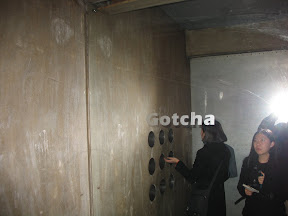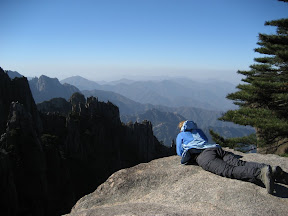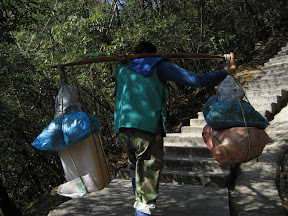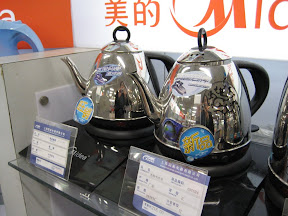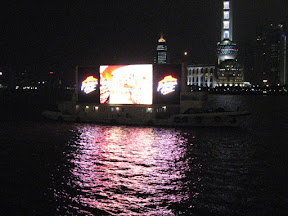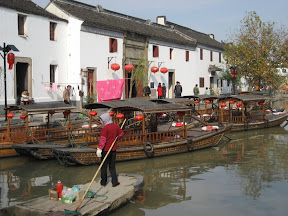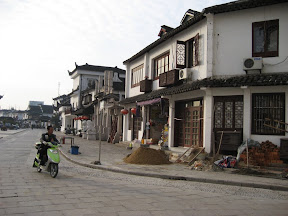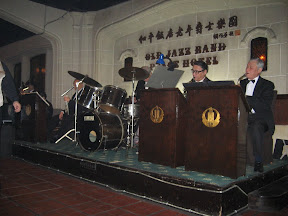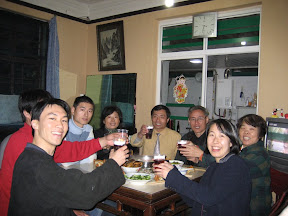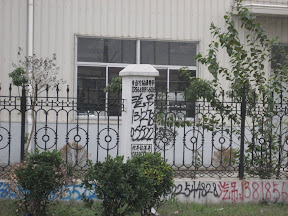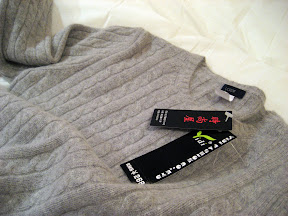
It’s cold here and I am embarrassed to say that I am a sucker for merino wool cable knit sweaters. In the United States, I treat myself to one or two sweaters a year, along with a few pairs of khakis, usually ordered from a catalog to accommodate my being vertically challenged. I’ve been avoiding the clothing stores on Fuxing and Nanchang Roads mainly because I fear that the salespeople will pounce on me and guilt me into buying by following me around and constantly barking out increasingly ridiculous discounts.
Well, I discovered where all my beloved sized 4P dark fatigue JCrew pants disappear to when they fall off the back of the truck. My standard issue crew neck sweater is 68RMB instead of $68USD. All these favorites are one-offs however, but complete with the expected JCrew, Ann Taylor, Esprit, Guess or Levi Strauss nametag. I had to sift through a large trash bag for sweaters in one store.
So it turns out that all these seemingly boutique stores on the main thoroughfares in the French Concession are selling a motley collection of western clothes. They all look the same. There is nothing to draw me more to one than another. They are all lacking identity, perhaps of their slightly illegitimate nature. Have the Chinese not discovered the power of consolidation and brand identity?
On my second day here, I wrote about going to the ‘Modern Electronics Store’ with Lisa where every vendor was selling the same array of cell phones and electronic gadgets. Buying the same cell phone from Stall #137 rather than #250 made almost no difference. It turns out that this phenomenon is the same everywhere for everything. Down the street from home is the flower market – fifty stalls all selling approximately the same flowers and flower arrangements – each flower individual wrapped in tissue paper?! Then there’s FuZhou Lu two subway stations away near People’s Square. Everybody on this street sells the same stationery and office supplies. Even the store fronts look exactly the same.
This makes me wonder about two things:What happened to the small multi-faceted pedestrian communities that were self sufficient with their own bookstore, clothing store, grocery store and general store? Did these exist once upon a time only to be bulldozed to make way for giant apartment complexes, forcing retailers to relocate to these mega-markets of specialized goods that are all far away from each other? Or have specialized markets always been a way of life here?
Do the Chinese rather have their own business with a mishmash smorgasbord of goods rather than work for someone else as part of a larger retail business? Is the individual entrepreneurial spirit and sense of pride here so strong that prevents them from building bigger, more efficient businesses with consistent marketing and brand equity? I mean, seriously now, the tobacco and liquor store down the street also sells cashmere sweaters, just in case, on the spur of the moment, I wanted to buy a cashmere sweater to go with my bottle of scotch.
On that note, this is a big year for foreign retailers entering China. ToysRUs just opened up a store in Pudong and Best Buy has landed as well. I wonder how the locals will respond to the lack of opportunity to bargain in these big box retail stores.
